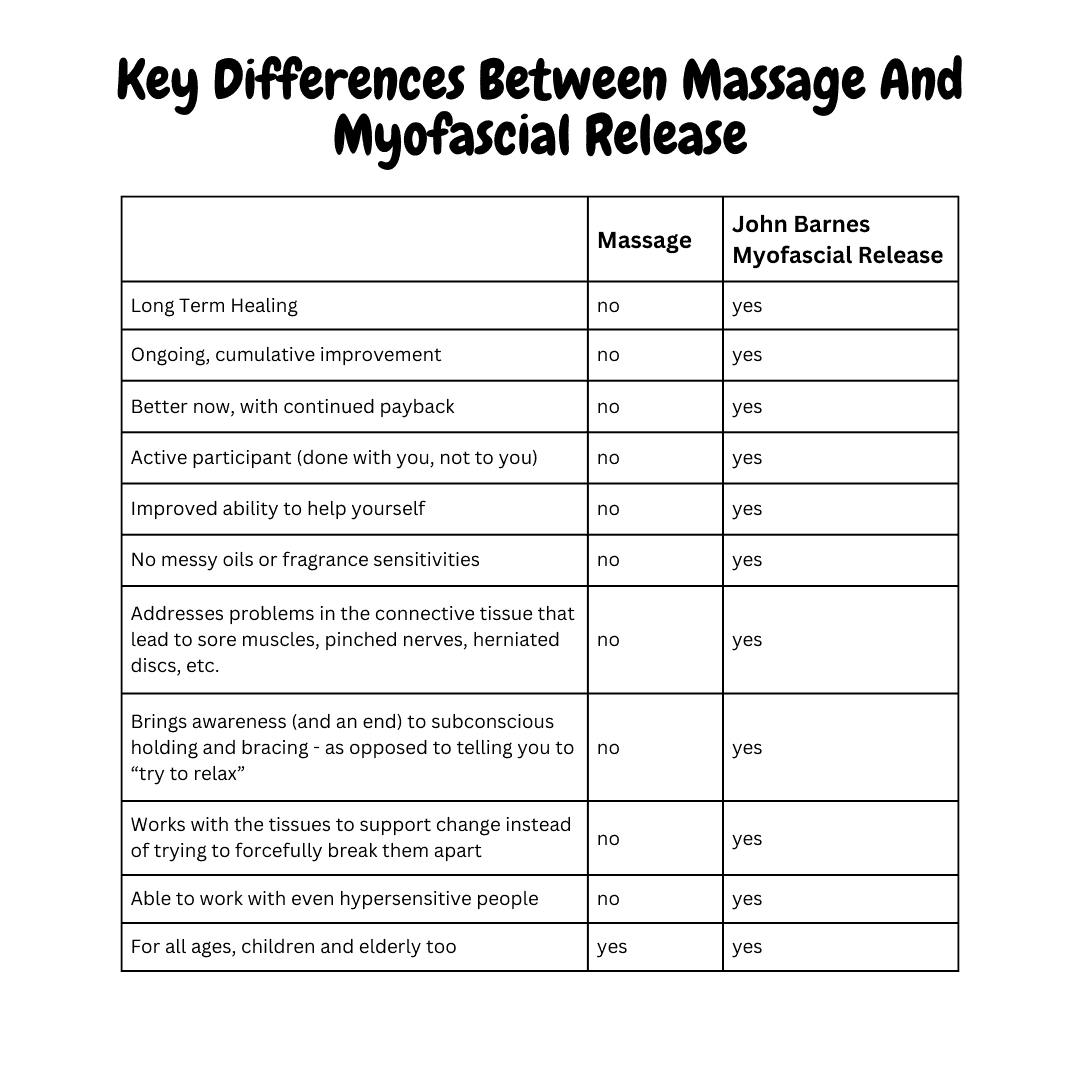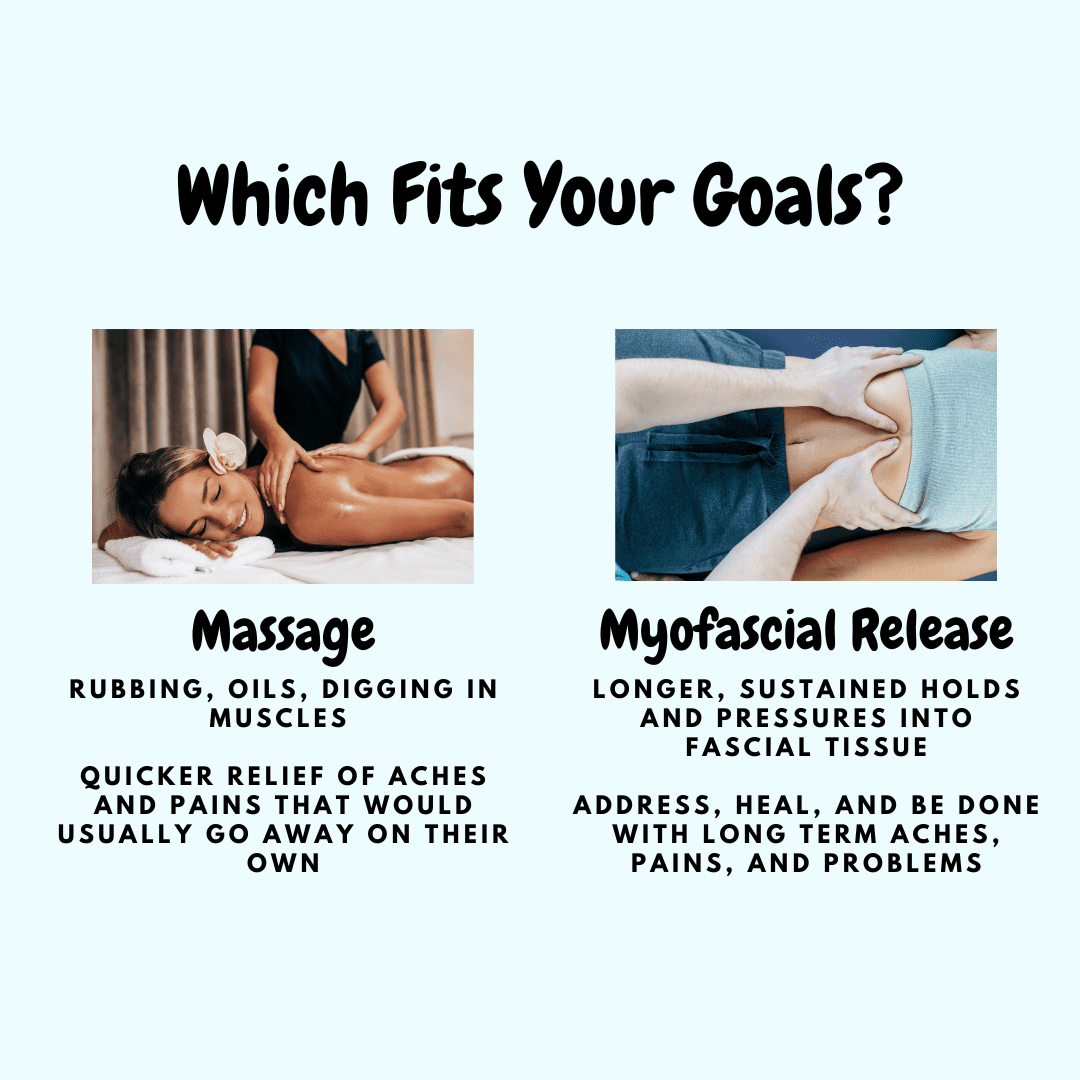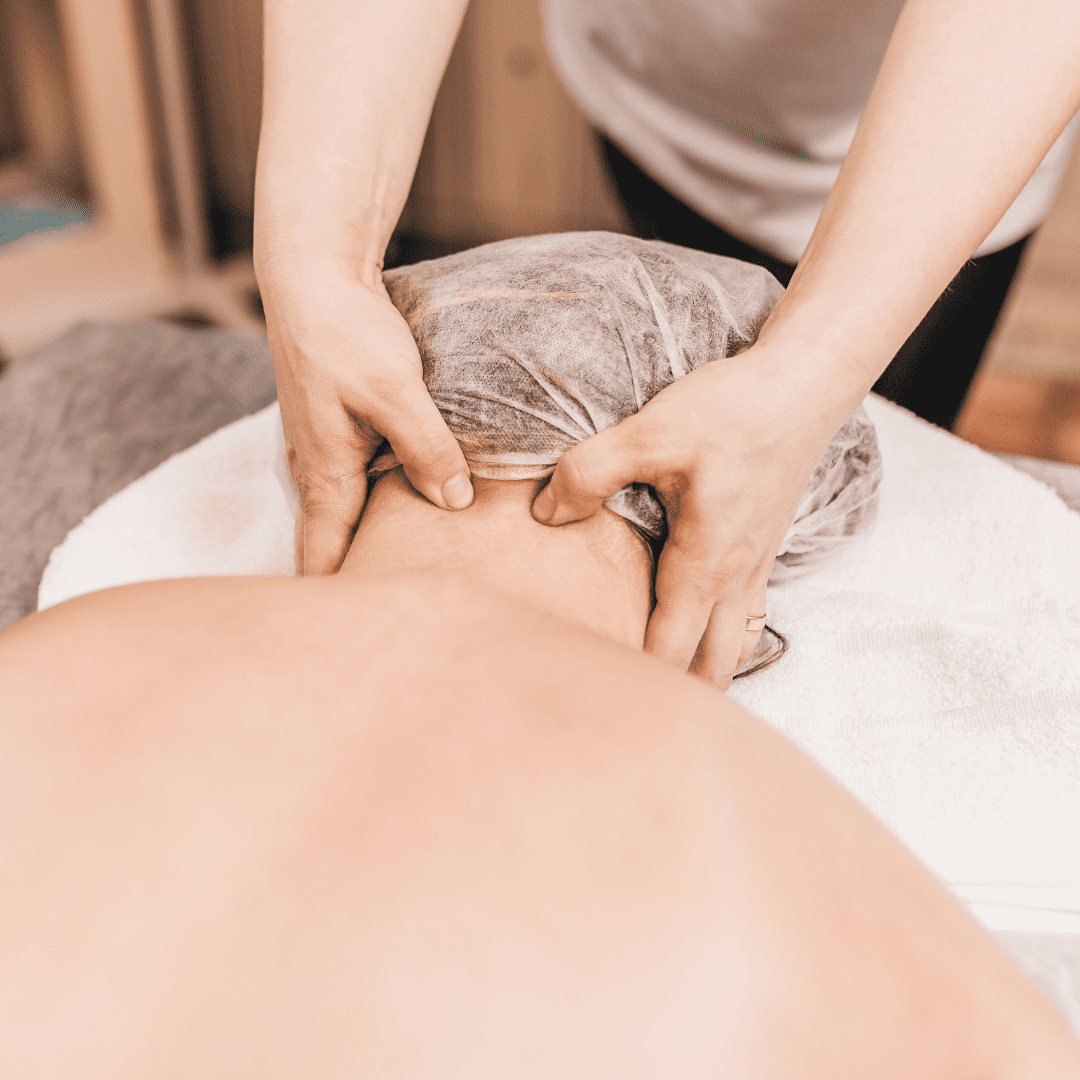I get asked this question often, what’s the difference between massage and myofascial release, is it rubbing and stretching? Is it like deep tissue or sports massage? Is it more energy work instead of physical? And the answer is … sort of!
How Are Massage And Myofascial Release Different?
Of course, I could get technical and talk about how myofascial release can be considered part of massage therapy, just like it can be considered part of physical therapy. And I’ll do just a bit of that in a moment, but what I find most people really want to hear about is what are the differences in what you get out of massage versus myofascial release therapy. Or in other words, “Why would I use one or the other?”
And that is an excellent question!

So first, when people talk about massage, they generally mean the oil and rubbing. Or they might mean deep tissue and trigger point, where the therapist uses elbows and fingertips to “dig out” the tight knots in your muscles. The rubbing is soothing and relaxing, and can feel really good, the kind of good that makes you forget your problems for an hour or two.
The second kind, deep tissue, is often where you get that “good hurt” that can be a bit intense, but you feel better and more relaxed afterwards. Deep tissue is often a favorite of athletes or people who always “carry their tension” in their shoulders. These are the people who are trying to work out various problems in their bodies.
Both the rubbing and the deep tissue are great, they usually feel awesome and leave you feeling so much better afterwards. But here’s the trouble… the tensions, aches, and pains come back. Sometimes they come back as soon as you get off the table. Usually the effects last no more than a week.
So if you’re looking for an ongoing therapeutic effect – one that leads to significant change and improvement in how your body feels and works – both the rubbing and the deep tissue types of massage therapy leave a lot to be desired.
They’re okay, but they keep you with a weekly or monthly back and forth maintenance. Oil, rubbing, and even deep tissue massage therapies don’t provide for much in the sense of long term improvement and change. In other words, if you’ve got anything more than a mild problem, you’re not going to get very far, though it’s definitely better than nothing, and enjoyable.
(If you know any massage therapists, you can ask them just how much better they see people get.)
Why is that?
Why Do Massage And Myofascial Release Get Different Results?
Another good question! And the answer is two reasons: first, typical massage therapy is aimed at sore, tight muscles and sore, tight muscles are not the problem, they are the result of the problem! Second, both the oil/rubbing and the deep tissue types of massage therapy don’t do much to improve the problem, the cause of sore, achy muscles. They are too quick and usually use too much force! This just doesn’t give your body the chance it needs to make a lasting change.
With massage, you feel good and you get relaxation with quicker relief of aches and pains that would likely ease on their own. It’s a good way to rejuvenate and keep going.
But if you want to address, heal, and be done with long term aches, pains, and problems, you need myofascial release therapy.
Want your back to stop aching all the time? Headaches, neck or shoulder pains to go away? Or do you want to avoid surgery and walkers for longer, maybe indefinitely? Myofascial release will help you with each of those. But let’s talk about going beyond simply pain relief, because MFR is so much more than a glorified pain pill.

Remember how you used to play? Or have energy to keep going? How about how you used to be able to get down on the floor and crawl around without getting stiff and sore?
Because myofascial release addresses the underlying problems leading to soreness, stiffness, aches, and pains – and because myofascial release restores the proper movement, alignment, and space your body needs in order to avoid pinched nerves, herniated discs, and further breakdown – myofascial release is the best choice for people who want to feel good and reverse some of the aging and injuries they’ve experienced.
(Before I go further, I’m talking specifically about John F Barnes’ Myofascial Release Approach®. There are multiple types of myofascial release, and the difference between them is a topic for another article. I hope it will suffice for the moment to say that the difference does matter!)
What makes the difference in results between massage therapy and myofascial release therapy? Again, massage is about soothing sore and tight muscles whereas myofascial release targets the troubles in your tissues that lead to sore and tight muscles.
It’s like changing your focus from the unevenly worn tires on your car, to the misalignment that keeps causing the uneven wearing. And that just makes more sense, doesn’t it?
Explore In More Depth With These Articles!
Which Form Of Myofascial Release Is Right For Me?
Myofascial Health For The Long Term
What Makes Working With Release Works Myofascial Therapy Clinic Different?
How does it work? That’s hard to explain when you haven’t felt anything like it before… It’s sometimes like stretching, it’s sometimes like melting thickened tissues. Myofascial release is hands-on, manual therapy, using sustained pressure or traction from the therapist’s hands into hardened and thickened tissues and scar tissues in your body. We call these restrictions.
The salient point is that restricted tissues cause problems (like distortions in movement and alignment of your body) that lead to compensations, sorenesses, and areas being “beat up” and breaking down.
Restrictions frequently do not hurt in and of themselves, but they lead to problems and pain elsewhere in your body. It’s important to realize, rubbing and the typical stretching you do will not release these restrictions, it’s just too hard and too fast. Also, restricted tissue doesn’t show up on any of the typical scans your doctor will perform.
So restrictions and the problems they cause are just plain out of the awareness of most doctors, who are focused on the symptoms that result.
To sum it up, massage is not the same as myofascial release. When considering which best fits your needs, it is important to note that massage is primarily focused on relaxation, soothing, and easing tired and sore muscles while myofascial release focuses on restrictions within the connective tissue system of the body (which are often the cause of tired and sore muscles).
Want to know more about myofascial release and how we might help? Give us a call or simply fill out this form.


